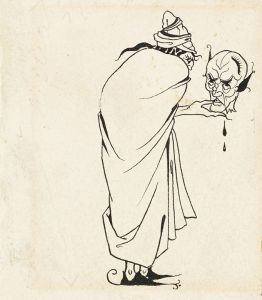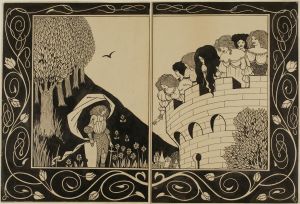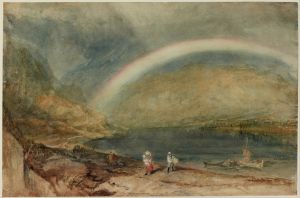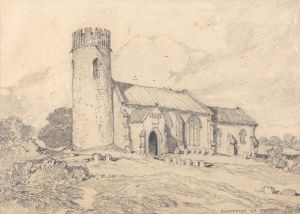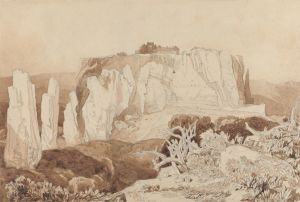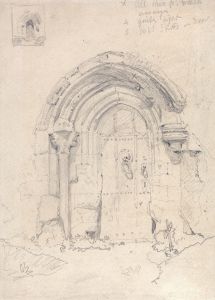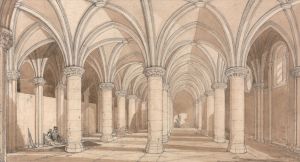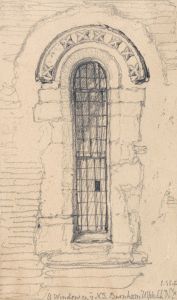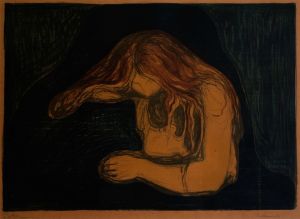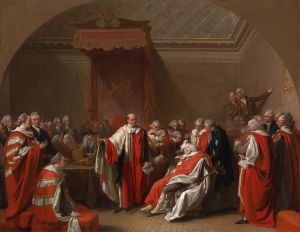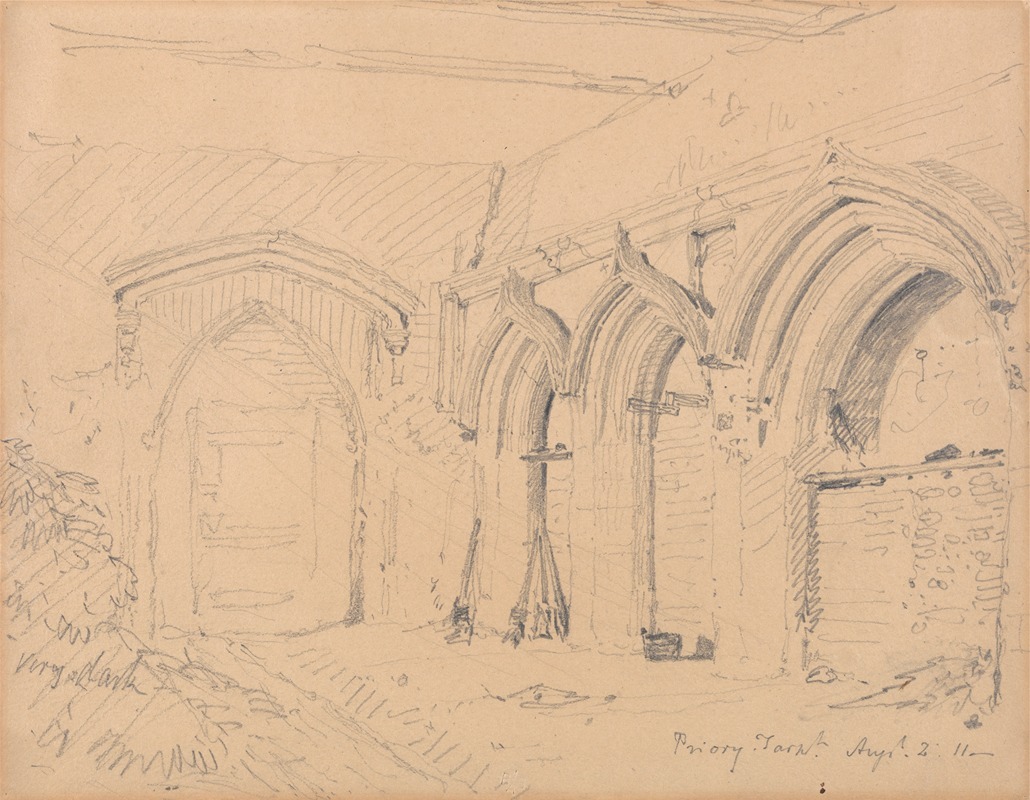
Interior of the Ruins of Yarmouth Priory
A hand-painted replica of John Sell Cotman’s masterpiece Interior of the Ruins of Yarmouth Priory, meticulously crafted by professional artists to capture the true essence of the original. Each piece is created with museum-quality canvas and rare mineral pigments, carefully painted by experienced artists with delicate brushstrokes and rich, layered colors to perfectly recreate the texture of the original artwork. Unlike machine-printed reproductions, this hand-painted version brings the painting to life, infused with the artist’s emotions and skill in every stroke. Whether for personal collection or home decoration, it instantly elevates the artistic atmosphere of any space.
"Interior of the Ruins of Yarmouth Priory" is a watercolor painting by the renowned English artist John Sell Cotman. Cotman, born in 1782, was a prominent figure in the Norwich School of painters, a movement known for its focus on landscape and marine subjects. He is celebrated for his mastery of watercolor and his ability to capture the atmospheric qualities of the English countryside and architectural ruins.
This particular painting, created in 1818, depicts the interior of the ruins of Yarmouth Priory, located in Great Yarmouth, Norfolk. The priory, originally founded in the 12th century, was a significant religious site until its dissolution during the Reformation in the 16th century. By the time Cotman painted it, the priory had long been in ruins, a common fate for many such structures following the Dissolution of the Monasteries under Henry VIII.
Cotman's work is characterized by its meticulous attention to detail and his ability to convey the texture and mood of the scene. In "Interior of the Ruins of Yarmouth Priory," he uses a delicate palette of muted colors to evoke the sense of decay and the passage of time. The painting captures the remnants of the priory's architecture, with its crumbling walls and overgrown vegetation, suggesting a sense of both historical grandeur and inevitable decline.
The composition of the painting is carefully balanced, with the ruins occupying the central focus, framed by the natural elements that have encroached upon the site. Cotman's use of light and shadow adds depth to the scene, highlighting the contrast between the solid stone structures and the ephemeral quality of the surrounding foliage. This interplay of light and dark not only enhances the visual impact of the painting but also underscores the theme of transience and the enduring presence of nature.
John Sell Cotman's work, including "Interior of the Ruins of Yarmouth Priory," has been highly regarded for its contribution to the Romantic movement in art. His ability to capture the sublime beauty of ruins and the natural landscape has earned him a lasting place in the history of British art. Cotman's paintings are held in numerous public and private collections, and his influence can be seen in the works of later artists who sought to explore similar themes of nature, history, and the passage of time.
In summary, "Interior of the Ruins of Yarmouth Priory" is a significant example of John Sell Cotman's artistic legacy. Through his skilled use of watercolor, Cotman brings to life the haunting beauty of the priory's ruins, offering viewers a glimpse into the past and a reflection on the enduring power of nature and history.





